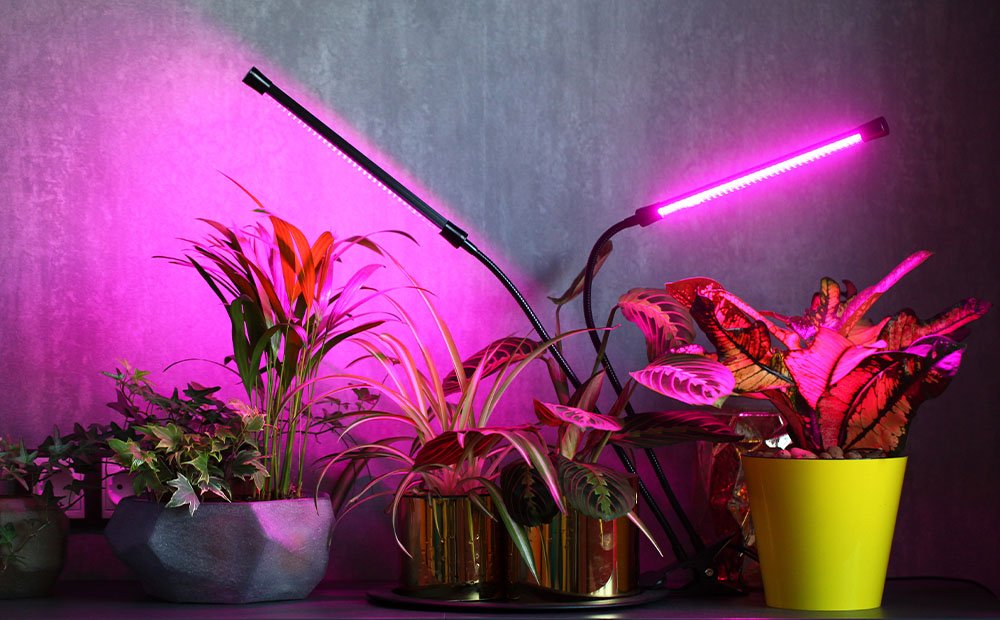SHEDDING LIGHT ON GROW LIGHTS
Gardening inside is a great way to keep the home bright and happy during the winter season. However, getting enough light during the winter months can be difficult, especially if you live somewhere with very little sunlight, like a north-facing apartment.
Don’t let the winter season get you down, though! Gardening indoors is easy with the help of grow lights. You can put a little ray of sunlight wherever you want to garden, making sure your plant has optimal growing conditions.
Key Features of Different Grow Lights
There are three main types of grow lights that you can use, each with its own key features: incandescent, fluorescent, and LED.
Incandescent grow lights are cheap and easy to find, making them a great option for a beginner or if you have a tight budget. Be careful with these, as they can get very hot! Keep these lights at least 18” away from your plants to avoid scorching them, and of course, keep them out of reach of children and pets.
Fluorescent grow lights have a cooler, safer temperature, making them a great option if you have kids or pets roaming the house! The key feature of fluorescent grow lights is that they offer a wider light spectrum than incandescent varieties. They are not the best option for promoting flowering and fruiting in your plants, however.
LED grow lights are the bee’s knees. They last a long time and offer a full spectrum of light which will promote fruiting, flowering, and leaf growth, making them suitable for any plant you’re growing indoors. Although they cost a lot more than the alternative options, your plants will be unstoppable with the key features this powerful light offers!
Note that regular LED lights are good in a pinch, but they don’t emit the full light spectrum. Since our eyes only need certain parts of the light spectrum, most bulbs don’t emit that. However, for gardening, your plants need the whole spectrum for long-term successful growing!
Setting Up for Indoor Gardening
If you’re gardening on a budget, you can buy a very simple grow light with a stand or put a grow light bulb into an existing lamp that you already have at home, as long as the size and wattage are compatible.
If you choose to use an existing lamp, be sure to consider how direct the light will be for your plant and how close the grow light will be. If the light is too far away, your plant may get leggy trying to reach the source of light!
If you want to spend a little more on a grow light system with fancy key features, there are stackable units, adjustable clip-on lights, grid-like hanging lights to shower your plants with energy, and more. Indoor gardening can turn into a master craft if you want it to, enabling you to grow literally anything from inside your home.
Making the Best Environment for Your Indoor Plants
The best way to make sure your houseplants are happy with indoor gardening is to mimic outdoor gardening! Plants follow a day/night cycle, rely on wind to make them sturdy, and adjust to less light in the winter.
We recommend using a light timer to manage light exposure for your plants. You can decrease the light during the winter to mimic the natural daylight and increase it again in the summertime. It’s also nice to not have to worry about turning the light on and off every day at the right time!
If your plant is growing too leggy, consider bringing the light closer or putting a light fan on it to encourage the plant to hunker down a bit.
Using grow lights for indoor gardening is a great method to ensure the best success for your plants! If you’re in Indianapolis, visit us to start DIY grow light gardening today!





